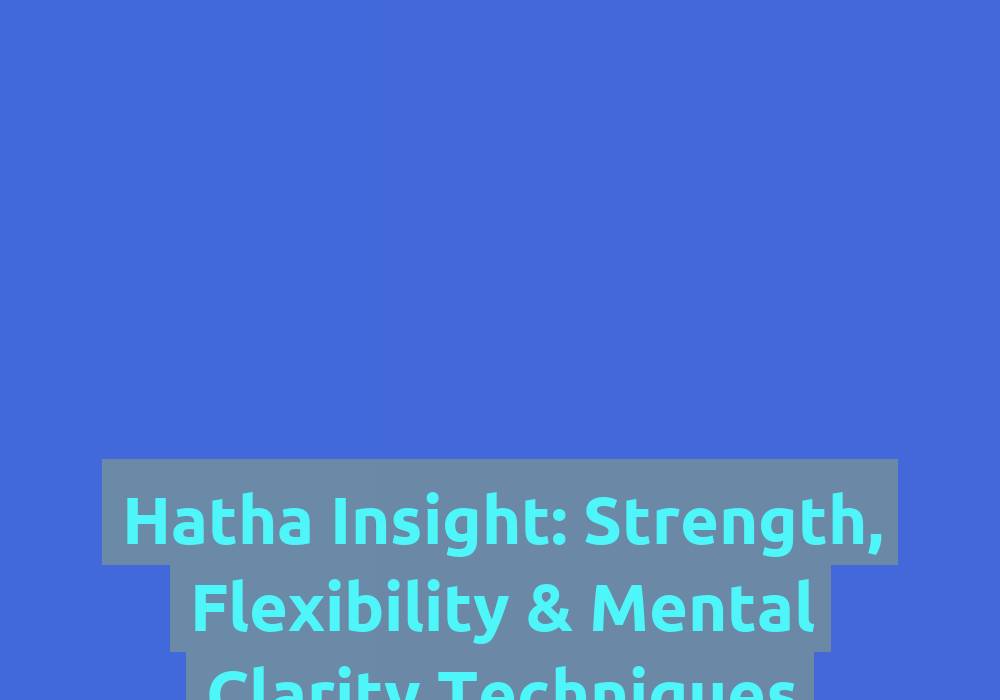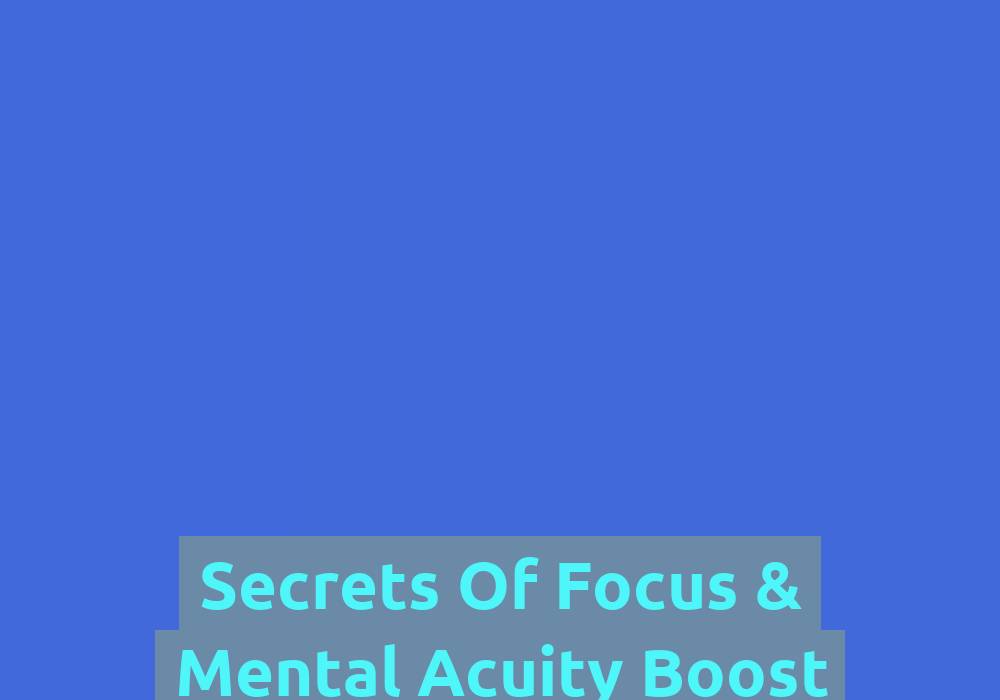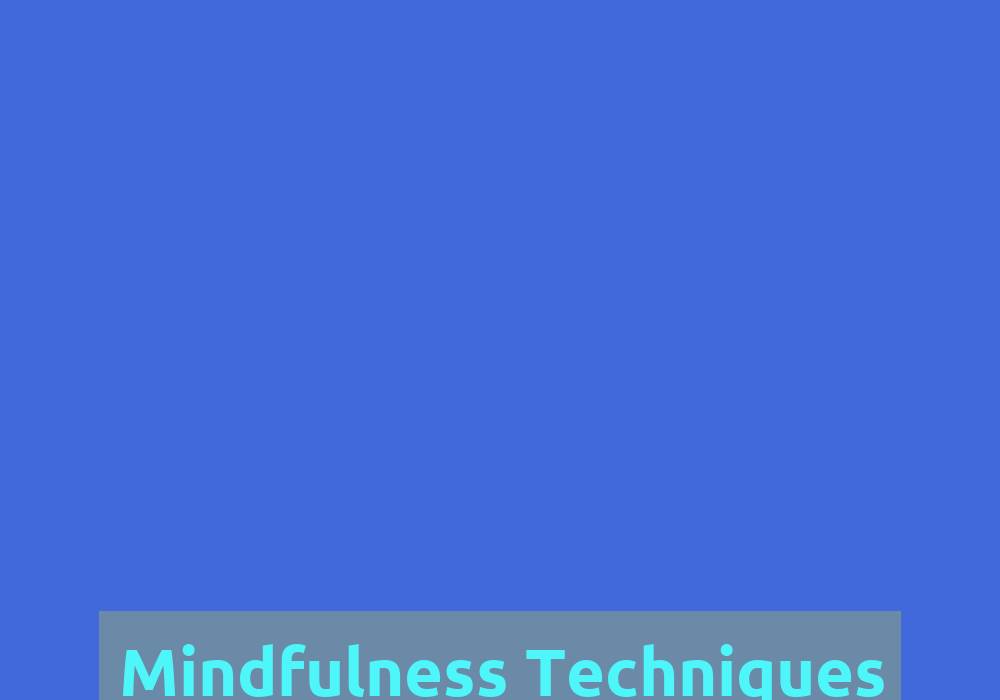
Hatha Yoga is a popular branch of yoga that focuses on the physical practice of asanas (poses), pranayama (breathing exercises), and dhyana (meditation). It combines physical movement, breathing techniques, and mindfulness to promote strength, flexibility, and mental clarity. In this article, we will explore various techniques and benefits of Hatha Yoga.
Understanding Hatha Yoga
Hatha Yoga originated in ancient India and has been practiced for thousands of years. It is a holistic approach to physical and mental well-being, aiming to bring balance and harmony to the body and mind. The word hatha is derived from the Sanskrit words ha meaning sun and tha meaning moon, symbolizing the balance of opposing energies within ourselves.
Hatha Yoga is a comprehensive system of yoga that encompasses various practices to promote physical and mental well-being. It focuses on asanas, which are physical postures, pranayama, which involves breath control, and dhyana, which is meditation.
The Benefits of Hatha Yoga
Hatha Yoga offers numerous benefits for both the body and mind. Here are some of the key benefits:
-
Improved Strength: Regular practice of Hatha Yoga helps build strength and endurance. The asanas engage various muscle groups, promoting overall body strength. By holding the poses and moving through sequences, you develop muscular strength and tone.
-
Enhanced Flexibility: Flexibility is a fundamental aspect of Hatha Yoga. Through consistent practice, you can gradually increase your flexibility, making your body more supple and agile. The various asanas and stretches involved in Hatha Yoga target different muscle groups and improve joint mobility, allowing for greater flexibility.
-
Stress Relief: Hatha Yoga incorporates relaxation techniques and mindfulness practices that help reduce stress and anxiety. It encourages a calm and focused mind, promoting mental clarity and emotional well-being. The combination of physical movement, breath control, and meditation in Hatha Yoga helps activate the body’s relaxation response, reducing stress hormones and inducing a state of relaxation.
-
Increased Energy: Hatha Yoga stimulates the body’s energy centers, known as chakras. By unblocking and balancing these energy centers, you can experience increased vitality and energy levels. The practice of asanas, pranayama, and meditation in Hatha Yoga helps to remove energy blockages and promote the free flow of prana (life force energy) throughout the body, resulting in a boost in energy levels.
-
Improved Posture: The asanas in Hatha Yoga emphasize proper alignment and posture. Regular practice helps improve posture and alleviate common issues such as back pain and muscular imbalances. The focus on alignment and core engagement in Hatha Yoga helps to strengthen the muscles that support proper posture, leading to improved spinal alignment and overall postural awareness.
-
Better Breath Control: Pranayama, or breathing exercises, are an integral part of Hatha Yoga. These exercises teach you to control and regulate your breath, improving lung capacity and overall respiratory function. By practicing pranayama techniques such as alternate nostril breathing, deep belly breathing, and ujjayi breath, you can enhance your breath control, increase oxygen intake, and improve the efficiency of your respiratory system.
-
Mind-Body Connection: Hatha Yoga emphasizes the connection between the body and mind. By practicing mindfulness and focusing on the present moment, you can develop a deeper awareness of your body, thoughts, and emotions. Through the integration of physical movement, breath awareness, and meditation, Hatha Yoga cultivates a mind-body connection, allowing you to be fully present and engaged in the practice.
Techniques for Strength and Flexibility
-
Sun Salutation: The Sun Salutation, or Surya Namaskar, is a popular sequence of asanas that helps warm up the body and build strength. It involves a series of flowing movements that engage multiple muscle groups. Each movement coordinates with the breath, creating a dynamic flow that increases blood circulation, warms up the muscles, and prepares the body for the subsequent asanas.
-
Standing Poses: Standing poses such as Warrior I, Warrior II, and Tree Pose help strengthen the legs, core, and improve overall balance. These poses also enhance flexibility in the hips and hamstrings. Standing poses require stability and engagement of the lower body muscles, helping to build strength and increase flexibility in the lower body.
-
Backbends: Backbends like Cobra Pose and Bridge Pose strengthen the back muscles, open the chest, and improve spinal flexibility. They also stimulate the nervous system and promote better posture. Backbends help to counteract the effects of prolonged sitting and hunching forward, strengthening the muscles of the back and promoting a healthy spine.
-
Forward Bends: Forward bends like Standing Forward Fold and Seated Forward Bend stretch the hamstrings, lower back, and promote flexibility in the spine. They also help calm the mind and relieve stress. Forward bends provide a gentle stretch to the back of the body, releasing tension in the muscles, and promoting relaxation and introspection.
-
Twists: Twisting poses like Half Lord of the Fishes and Revolved Triangle twist the spine, massage the internal organs, and improve digestion. They also help increase spinal mobility and detoxify the body. Twists wring out the spine, aiding in the elimination of toxins and improving digestion. They also stimulate the abdominal organs, promoting a healthy digestive system.
-
Hip Openers: Hip-opening poses like Pigeon Pose and Butterfly Pose release tension in the hips, groin, and lower back. They help increase flexibility in the hips and improve overall posture. Hip openers target the hip joints and surrounding muscles, promoting mobility and relieving tightness in the hips, which is common due to prolonged sitting.
-
Meditation: Hatha Yoga incorporates various meditation techniques to calm the mind and increase mental clarity. Mindfulness meditation, focusing on the breath, and visualization are commonly practiced during Hatha Yoga sessions. Meditation helps to quiet the mind, cultivate present-moment awareness, and enhance mental clarity. It allows you to observe your thoughts without judgment and develop a sense of inner calm and tranquility.
-
Pranayama: Pranayama exercises, such as Alternate Nostril Breathing and Ujjayi Breath, help regulate the breath and calm the mind. These techniques enhance mental focus and clarity. Pranayama practices involve specific breath control techniques that help balance the nervous system, increase oxygenation to the brain, and promote mental alertness and clarity.
-
Shavasana: Shavasana, also known as Corpse Pose, is a relaxation pose practiced at the end of a Hatha Yoga session. It allows the body and mind to fully relax, promoting deep rest and mental clarity. Shavasana provides an opportunity to integrate the benefits of the physical practice and meditation, allowing the body to rejuvenate and the mind to settle into a state of calm and clarity.
-
Affirmations: Positive affirmations, repeated during Hatha Yoga practice, can help shift negative thought patterns and cultivate a positive mindset. Affirmations can enhance mental clarity and promote self-confidence. By incorporating positive affirmations into your Hatha Yoga practice, you can reframe negative beliefs, enhance self-awareness, and cultivate a positive and empowering mindset.
Conclusion
Hatha Yoga offers a holistic approach to physical and mental well-being, combining strength-building asanas, flexibility-enhancing poses, and mindfulness techniques. Regular practice of Hatha Yoga can lead to improved strength, flexibility, and mental clarity. Whether you are a beginner or an experienced yogi, incorporating Hatha Yoga into your routine can bring numerous benefits to your overall health and well-being.
Note: This article is generated by OpenAI’s GPT-3 language model. While it strives to provide accurate and helpful information, it is always recommended to consult a qualified yoga instructor for personalized guidance and instruction.
Complete Article in Markdown Format:
Hatha Yoga is a popular branch of yoga that focuses on the physical practice of asanas (poses), pranayama (breathing exercises), and dhyana (meditation). It combines physical movement, breathing techniques, and mindfulness to promote strength, flexibility, and mental clarity. In this article, we will explore various techniques and benefits of Hatha Yoga.
Understanding Hatha Yoga
Hatha Yoga originated in ancient India and has been practiced for thousands of years. It is a holistic approach to physical and mental well-being, aiming to bring balance and harmony to the body and mind. The word hatha is derived from the Sanskrit words ha meaning sun and tha meaning moon, symbolizing the balance of opposing energies within ourselves.
Hatha Yoga is a comprehensive system of yoga that encompasses various practices to promote physical and mental well-being. It focuses on asanas, which are physical postures, pranayama, which involves breath control, and dhyana, which is meditation.
The Benefits of Hatha Yoga
Hatha Yoga offers numerous benefits for both the body and mind. Here are some of the key benefits:
-
Improved Strength: Regular practice of Hatha Yoga helps build strength and endurance. The asanas engage various muscle groups, promoting overall body strength. By holding the poses and moving through sequences, you develop muscular strength and tone.
-
Enhanced Flexibility: Flexibility is a fundamental aspect of Hatha Yoga. Through consistent practice, you can gradually increase your flexibility, making your body more supple and agile. The various asanas and stretches involved in Hatha Yoga target different muscle groups and improve joint mobility, allowing for greater flexibility.
-
Stress Relief: Hatha Yoga incorporates relaxation techniques and mindfulness practices that help reduce stress and anxiety. It encourages a calm and focused mind, promoting mental clarity and emotional well-being. The combination of physical movement, breath control, and meditation in Hatha Yoga helps activate the body’s relaxation response, reducing stress hormones and inducing a state of relaxation.
-
Increased Energy: Hatha Yoga stimulates the body’s energy centers, known as chakras. By unblocking and balancing these energy centers, you can experience increased vitality and energy levels. The practice of asanas, pranayama, and meditation in Hatha Yoga helps to remove energy blockages and promote the free flow of prana (life force energy) throughout the body, resulting in a boost in energy levels.
-
Improved Posture: The asanas in Hatha Yoga emphasize proper alignment and posture. Regular practice helps improve posture and alleviate common issues such as back pain and muscular imbalances. The focus on alignment and core engagement in Hatha Yoga helps to strengthen the muscles that support proper posture, leading to improved spinal alignment and overall postural awareness.
-
Better Breath Control: Pranayama, or breathing exercises, are an integral part of Hatha Yoga. These exercises teach you to control and regulate your breath, improving lung capacity and overall respiratory function. By practicing pranayama techniques such as alternate nostril breathing, deep belly breathing, and ujjayi breath, you can enhance your breath control, increase oxygen intake, and improve the efficiency of your respiratory system.
-
Mind-Body Connection: Hatha Yoga emphasizes the connection between the body and mind. By practicing mindfulness and focusing on the present moment, you can develop a deeper awareness of your body, thoughts, and emotions. Through the integration of physical movement, breath awareness, and meditation, Hatha Yoga cultivates a mind-body connection, allowing you to be fully present and engaged in the practice.
Techniques for Strength and Flexibility
-
Sun Salutation: The Sun Salutation, or Surya Namaskar, is a popular sequence of asanas that helps warm up the body and build strength. It involves a series of flowing movements that engage multiple muscle groups. Each movement coordinates with the breath, creating a dynamic flow that increases blood circulation, warms up the muscles, and prepares the body for the subsequent asanas.
-
Standing Poses: Standing poses such as Warrior I, Warrior II, and Tree Pose help strengthen the legs, core, and improve overall balance. These poses also enhance flexibility in the hips and hamstrings. Standing poses require stability and engagement of the lower body muscles, helping to build strength and increase flexibility in the lower body.
-
Backbends: Backbends like Cobra Pose and Bridge Pose strengthen the back muscles, open the chest, and improve spinal flexibility. They also stimulate the nervous system and promote better posture. Backbends help to counteract the effects of prolonged sitting and hunching forward, strengthening the muscles of the back and promoting a healthy spine.
-
Forward Bends: Forward bends like Standing Forward Fold and Seated Forward Bend stretch the hamstrings, lower back, and promote flexibility in the spine. They also help calm the mind and relieve stress. Forward bends provide a gentle stretch to the back of the body, releasing tension in the muscles, and promoting relaxation and introspection.
-
Twists: Twisting poses like Half Lord of the Fishes and Revolved Triangle twist the spine, massage the internal organs, and improve digestion. They also help increase spinal mobility and detoxify the body. Twists wring out the spine, aiding in the elimination of toxins and improving digestion. They also stimulate the abdominal organs, promoting a healthy digestive system.
-
Hip Openers: Hip-opening poses like Pigeon Pose and Butterfly Pose release tension in the hips, groin, and lower back. They help increase flexibility in the hips and improve overall posture. Hip openers target the hip joints and surrounding muscles, promoting mobility and relieving tightness in the hips, which is common due to prolonged sitting.
- Meditation: Hatha Yoga incorporates various meditation techniques to calm the mind and increase mental clarity.
FAQ
Q1: What is Hatha Yoga?
A1: Hatha Yoga is a branch of yoga that focuses on physical practice, breath control, and meditation to promote strength, flexibility, and mental clarity.
Q2: What are the benefits of Hatha Yoga?
A2: Hatha Yoga offers improved strength, enhanced flexibility, stress relief, increased energy, improved posture, better breath control, and a stronger mind-body connection.
Q3: What are some techniques for strength and flexibility in Hatha Yoga?
A3: Some techniques for strength and flexibility in Hatha Yoga include Sun Salutation, standing poses, backbends, forward bends, twists, and hip openers.
Q4: How does Hatha Yoga promote mental clarity?
A4: Hatha Yoga promotes mental clarity through meditation, pranayama exercises, Shavasana (Corpse Pose), and affirmations. These techniques help calm the mind, increase focus, and cultivate a positive mindset.


